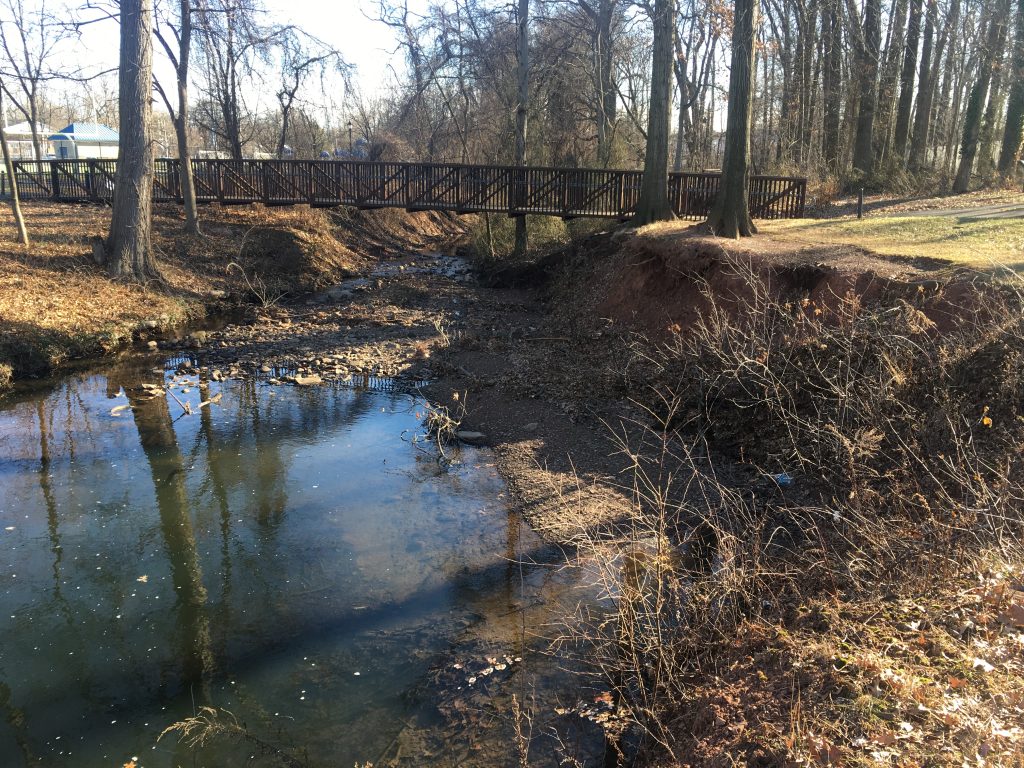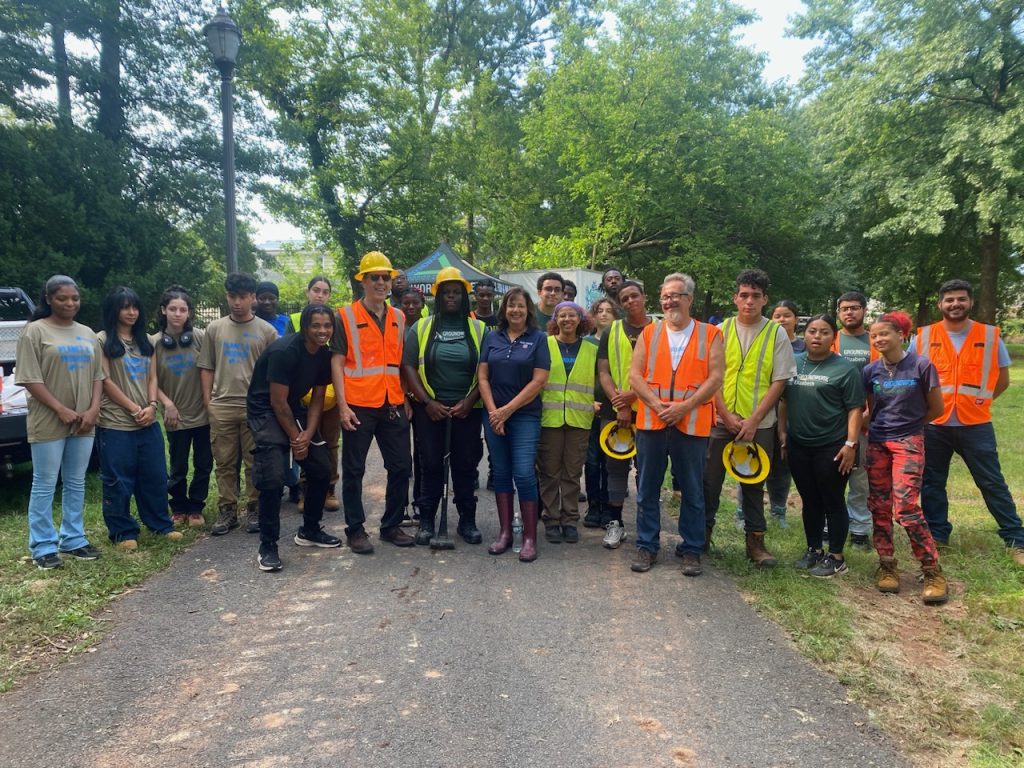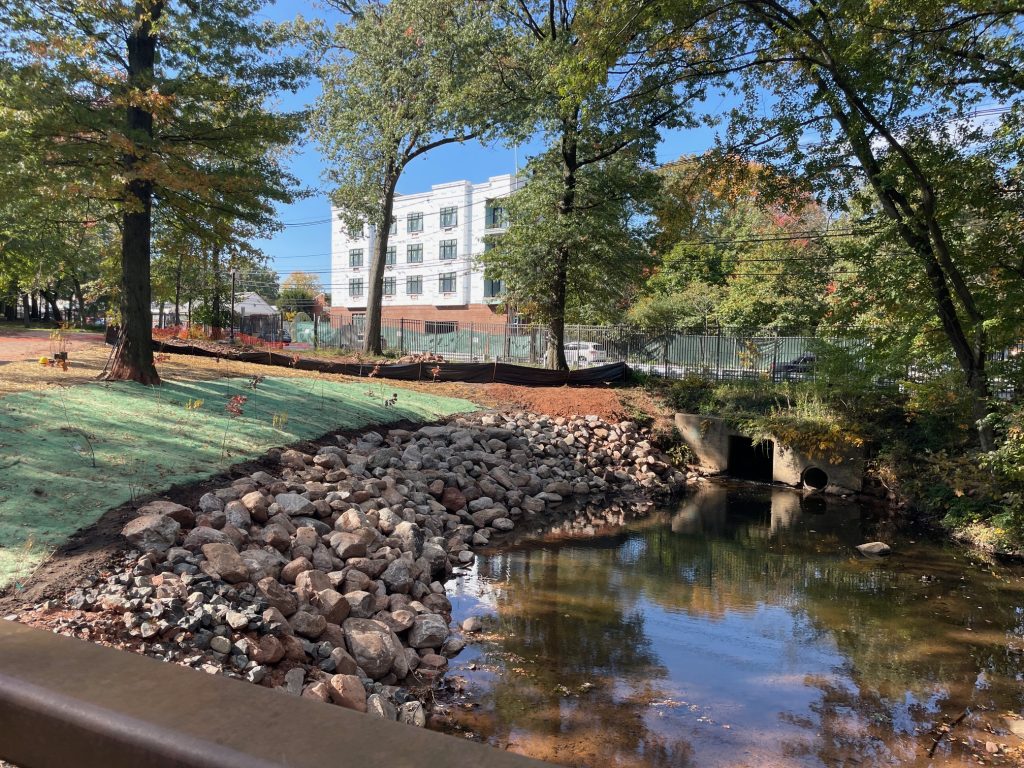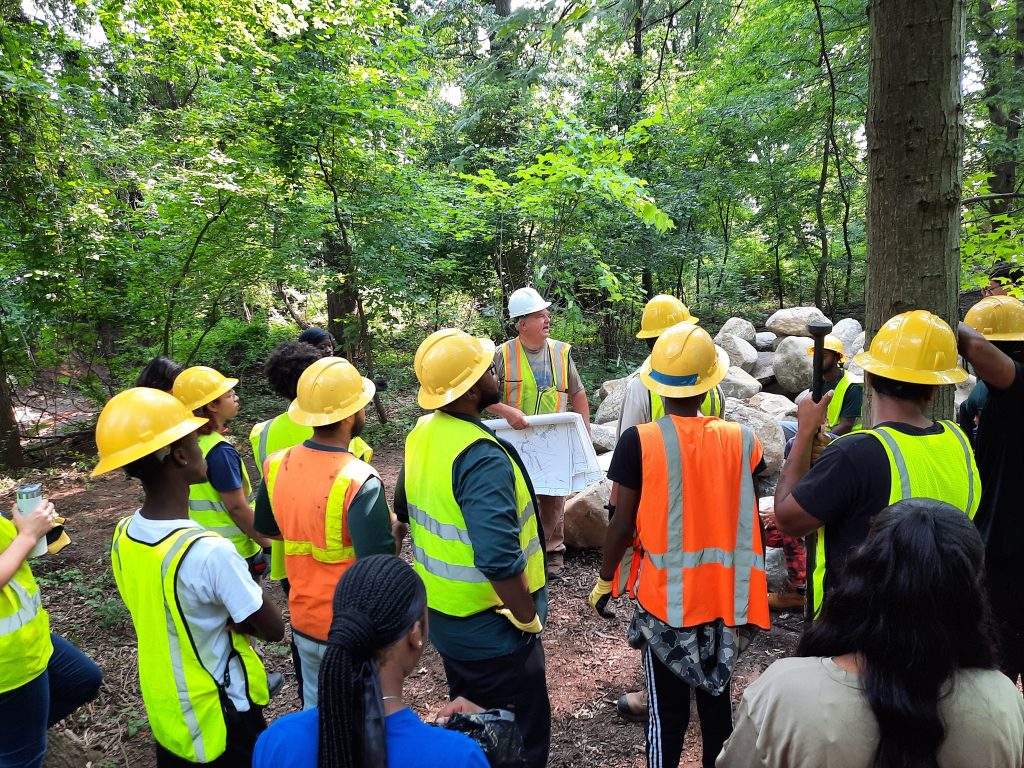
Project at Phil Rizzuto Park Completed
Groundwork Elizabeth
Union County communities are getting hotter and wetter. Building and development through the past three centuries has transformed native woodlands from farmlands into cities. The fields and trees which served to absorb water and cool the land have been replaced by buildings, sidewalks, and parking lots. The structures and impervious surfaces that surround them absorb heat and prevent water from flowing freely into the ground.
Phil Rizzuto Park, is located on the corner of Elizabeth and Union, N.J. Within the park the Trotters Branch of the Elizabeth River is an example of the result of decades of flooding and erosion. Sediments from an eroding tributary of the river hampered water from flowing freely into the main Elizabeth River as it makes its way to the NJ coastline, upsetting the fragile balance of natural plant and animal life and putting those who live nearby at risk.

There are ways to mitigate these challenges. Groundwork Elizabeth is an Elizabeth based nonprofit which has as its mission to build more sustainable communities, fostering everyone’s right to a healthy environment. Youth volunteers from the Groundwork program became enamored with the natural landscape of a woodland/wetland within Phil Rizzuto Park as far back as 2014 and wanted to maintain its vitality. Their continued passion for the site encouraged the 501c organization to take the next steps to helping to restore and preserve it.
A number of funders and agencies stepped up to lend support for a restoration program that would help reduce flooding and foster native coastal watershed wildlife. Phillips 66 Bayway Refinery led the way followed by the National Fish and Wildlife Foundation (Impact Directed Environmental Accounts and Five Star programs), the Natural Resource Conservation Service of the USDA, the US Fish and Wildlife Service and Friends of the Great Swamp, the NJ Conservation Foundation, the NJ Corporate Wetlands Restoration Partnership and the Environmental Endowment for NJ. Together they assisted the Elizabeth based nonprofit in its mission to restore and conserve the wetland.

Some of the improvements to the park include:
- Improvement of the ecological functions as well as the streambank condition by the placement of large rock deflectors and plantings along the streambed
- Stabilization of the streambank erosion underneath pedestrian bridge.
- Improvement of .4 acres of stream habitat, stream channel to enhance water flow and quality, beginning at the site nearest North Avenue for 150 feet.
- Enhance fish and macroinvertebrate habitat while also improving sediment transport and overall stream health.
- Reestablishment of the thalweg (the line or curve of lowest elevation within a valley or watercourse) by creating/enhancing point bars.
- Addition of rock riffles installed and pools deepened to further restore and enhance the characteristics and health of river
- Replace where invasive species were removed with plantings that help improve water quality and offer a better habitat for native plants, birds, salamanders, turtles, etc
- Introduction of permanent certified native grasses, native trees, legumes and /or forbs along with wildflowers and perennial plants that reduce sheet flow and provide habitats for native birds, butterflies, honeybees, and other native species.
- Construction of rain garden to complement area plantings to reduce runoff and provide habitat for native wildlife. A simple overlook for the public is at the site.
The park was closed for work from July through mid-November and is now open to the public. For more details about this project and more information on Groundwork, visit groundworkelizabeth.org.
Courtesy photos

